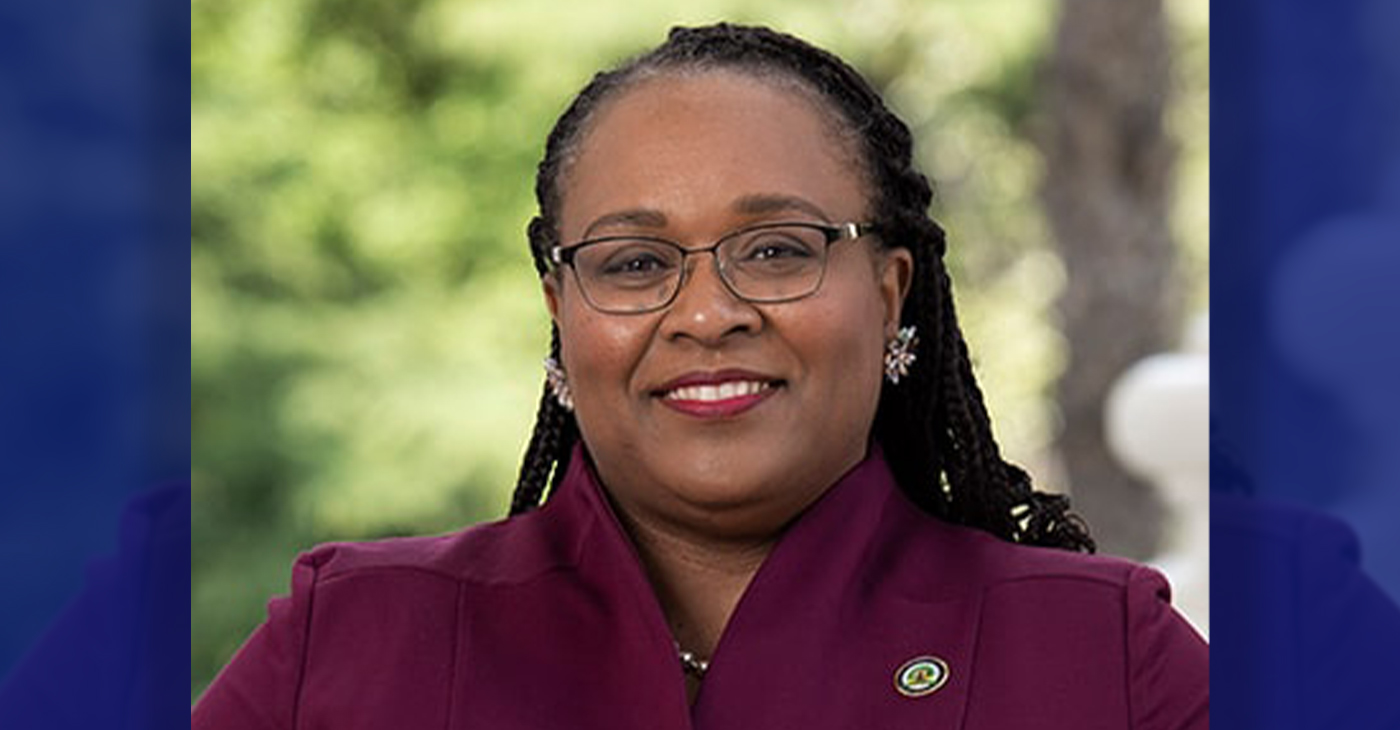Community
A Heartfelt ‘Thank You’ To Richmond and Native Communities from a Cancer Survivor
Recently, I received a powerful spiritual anti-cancer turtle medicine bag medallion and rope necklace from Chief Gordon Plain Bull Jr., a member of the Assiniboine and Sioux Reservation located near Fort Peck, Montana. He is the great-grandson of Chief Plenty Coups and the great-great nephew of Sitting Bull, the famous defender of native lands against settlers during the 1800s.

By Mike Kinney
Recently, I received a powerful spiritual anti-cancer turtle medicine bag medallion and rope necklace from Chief Gordon Plain Bull Jr., a member of the Assiniboine and Sioux Reservation located near Fort Peck, Montana.
He is the great-grandson of Chief Plenty Coups and the great-great nephew of Sitting Bull, the famous defender of native lands against settlers during the 1800s.
Chief Plain Bull’s gift was particularly powerful to me, as it was emblematic of the immense kindness and generosity of the communities in which I live and work, which includes fellow Native Americans and my neighbors here in Richmond.
Aside from reporting stories about people, places and events in the Richmond Standard, I have been a Native news journalist for some 45 years here in Richmond, writing for publications such as Native Hoop and Native News Online.
Today, as I celebrate my first-year anniversary as a cancer survivor, I’m taking a break from reporting on the issues of the communities I cover in order to tell my story of recovery. The reason is that my journey in the past year shines a light on the powerful bonds within the Richmond and Native communities. I am forever grateful to write about them, and to be part of them.
In November of 2021, I was diagnosed with small cell lung cancer on my left lung. I had been a career cigarette smoker for 40 years. I gave it up finally in 2014. Naturally, the diagnosis had me fearing death.
On March 13, 2022, I underwent robotic surgery to remove the cancer at the John Muir Hospital campus in Concord. The surgery team removed a quarter of my left lung. It was successful, and I remained at the hospital in recovery for seven days.
But the journey was far from over. Upon returning home, I was required to use an oxygen concentrator until my lungs healed, stripping me of the activities I most loved, from riding my mountain bike to taking long hikes at Wildcat Canyon. I feared being a burden on others, but was limited in what I could do physically.
Moreover, my doctor informed me of my need to undergo chemotherapy and immunotherapy. I would have a monthly infusion from IV bags. While I was fortunate to suffer no pain or side-effects from these therapies, hair loss from the chemotherapy meant I lost my Native ponytail, which was crushing to me.
And I was angry at myself. For 40 years, I chose to smoke cigarettes. I had no one to blame but myself for my condition, and that was difficult to handle; it drove me into depression. I felt alone, but due to the support from members of the Richmond and Native communities, I wouldn’t be alone.
Countless neighbors and Natives rallied to my side. My close friend, the well-known Richmond community activist Antwon Cloird, went out of his way to drive me to out-of-town medical appointments.
Cloird also offered powerful words of encouragement. Rather than considering this condition as the beginning of the end of my life, Cloird pointed out this was in fact my “second chance at creating a first-class life.”
There was also the kindness of Rev. Dr. Ofa Haunga from St. Luke’s United Methodist Church in Richmond, who along with the church community ensured I had fresh cooked food and prayers during my recovery. My good friend Georgette Bynum, a veteran registered nurse, acted as my medical coach, providing invaluable advice.
Richmond resident Don Gosney of “Radio Free Richmond,” along with Tyler Swartz, my nephew Ben, Denise Gianni and Richmond resident and photographer Ellen Gailing, all helped me shop for groceries and attend medical appointments.
Michelle Milam, a Richmond resident who serves as the city’s Crime Prevention Manager, offered prayers and also numerous drops of bottled water to my home to keep me hydrated.
Local Richmond residents John Ziesehenne, owner of M.A. Hays Insurance and Robert Rogers, district coordinator for County Supervisor John Gioia, were also powerful sources of support and encouragement.
Meanwhile, Native people and tribal communities across the nation conducted prayers on my behalf.
Carolyn Martell, a well-known Ojibway tribal artist and photographer in Denver, Colo. conducted numerous sacred ceremonies to support a successful surgery and recovery.
Meanwhile, Pomo tribal elder and leader Connie Reitman instructed me on important spiritual aspects of recovery as my being a Cherokee tribal person.
There are many more examples of generosity, too many to list here. Perhaps the cherry on top was receiving the spiritual anti-cancer turtle medicine bag medallion from Chief Plain Bull. He is a master of beading Native jewelry that comes to him in visions.
“All of my work comes from the Creator,” he told me. “I sit in Prayer for an hour or more before I start. Once the vision is given to me, I begin the work. Sometimes I start with the medallion and sometimes the rope is first. I always ask the person who’s receiving the special gift what their favorite color is.
“Then I start their Protector. When I get close to sewing up the medallion, I put the medicine in it. I have been instructed by the Creator to use seven herbal medicines to put in the medallion,” he said.
The many examples of healing power, from advice from loved ones on positive thinking, to powerful spiritual guidance and medicines, served to dissipate my depression and launch a life of recovery and spiritual journey.
I realized being Cherokee was important to my recovery. I returned to reconnecting with my culture, language, history and most importantly our spiritual and belief value system. Meanwhile, I was reminded why I live and love Richmond.
Recently, my doctor informed me that I am now free of cancer. I believe fully that in addition to the incredible care of medical staff, the incredible care and support from my communities are responsible for this positive outcome.
Thank you, wholeheartedly, to my fellow Native Americans and to the people of Richmond. I love you. You have enriched my story. Now, my mission is to double-down on enriching yours.
See you at the press conference.
Activism
Big God Ministry Gives Away Toys in Marin City
Pastor Hall also gave a message of encouragement to the crowd, thanking Jesus for the “best year of their lives.” He asked each of the children what they wanted to be when they grow up.

By Godfrey Lee
Big God Ministries, pastored by David Hall, gave toys to the children in Marin City on Monday, Dec. 15, on the lawn near the corner of Drake Avenue and Donahue Street.
Pastor Hall also gave a message of encouragement to the crowd, thanking Jesus for the “best year of their lives.” He asked each of the children what they wanted to be when they grew up.
Around 75 parents and children were there to receive the presents, which consisted mainly of Gideon Bibles, Cat in the Hat pillows, Barbie dolls, Tonka trucks, and Lego building sets.
A half dozen volunteers from the Big God Ministry, including Donnie Roary, helped to set up the tables for the toy giveaway. The worship music was sung by Ruby Friedman, Keri Carpenter, and Jake Monaghan, who also played the accordion.
Big God Ministries meets on Sundays at 10 a.m. at the Mill Valley Community Center, 180 Camino Alto, Mill Valley, CA Their phone number is (415) 797-2567.
Activism
First 5 Alameda County Distributes Over $8 Million in First Wave of Critical Relief Funds for Historically Underpaid Caregivers
“Family, Friend, and Neighbor caregivers are lifelines for so many children and families in Alameda County,” said Kristin Spanos, CEO, First 5 Alameda County. “Yet, they often go unrecognized and undercompensated for their labor and ability to give individualized, culturally connected care. At First 5, we support the conditions that allow families to thrive, and getting this money into the hands of these caregivers and families at a time of heightened financial stress for parents is part of that commitment.”

Family, Friend, and Neighbor Caregivers Can Now Opt Into $4,000 Grants to Help Bolster Economic Stability and Strengthen Early Learning Experiences
By Post Staff
Today, First 5 Alameda County announced the distribution of $4,000 relief grants to more than 2,000 Family, Friend, and Neighbor (FFN) caregivers, totaling over $8 million in the first round of funding. Over the full course of the funding initiative, First 5 Alameda County anticipates supporting over 3,000 FFN caregivers, who collectively care for an estimated 5,200 children across Alameda County. These grants are only a portion of the estimated $190 million being invested into expanding our early childcare system through direct caregiver relief to upcoming facilities, shelter, and long-term sustainability investments for providers fromMeasure C in its first year. This investment builds on the early rollout of Measure C and reflects a comprehensive, system-wide strategy to strengthen Alameda County’s early childhood ecosystem so families can rely on sustainable, accessible care,
These important caregivers provide child care in Alameda County to their relatives, friends, and neighbors. While public benefits continue to decrease for families, and inflation and the cost of living continue to rise, these grants provide direct economic support for FFN caregivers, whose wages have historically been very low or nonexistent, and very few of whom receive benefits. As families continue to face growing financial pressures, especially during the winter and holiday season, these grants will help these caregivers with living expenses such as rent, utilities, supplies, and food.
“Family, Friend, and Neighbor caregivers are lifelines for so many children and families in Alameda County,” said Kristin Spanos, CEO, First 5 Alameda County. “Yet, they often go unrecognized and undercompensated for their labor and ability to give individualized, culturally connected care. At First 5, we support the conditions that allow families to thrive, and getting this money into the hands of these caregivers and families at a time of heightened financial stress for parents is part of that commitment.”
The funding for these relief grants comes from Measure C, a local voter-approved sales tax in Alameda County that invests in young children, their families, communities, providers, and caregivers. Within the first year of First 5’s 5-Year Plan for Measure C, in addition to the relief grants to informal FFN caregivers, other significant investments will benefit licensed child care providers. These investments include over $40 million in Early Care and Education (ECE) Emergency Grants, which have already flowed to nearly 800 center-based and family child care providers. As part of First 5’s 5-Year Plan, preparations are also underway to distribute facilities grants early next year for child care providers who need to make urgent repairs or improvements, and to launch the Emergency Revolving Fund in Spring 2026 to support licensed child care providers in Alameda County who are at risk of closure.
The FFN Relief Grants recognize and support the essential work that an estimated 3,000 FFN caregivers provide to 5,200 children in Alameda County. There is still an opportunity to receive funds for FFN caregivers who have not yet received them.
In partnership with First 5 Alameda County, Child Care Payment Agencies play a critical role in identifying eligible caregivers and leading coordinated outreach efforts to ensure FFN caregivers are informed of and able to access these relief funds.FFN caregivers are eligible for the grant if they receive a child care payment from an Alameda County Child Care Payment Agency, 4Cs of Alameda County, BANANAS, Hively, and Davis Street, and are currently caring for a child 12 years old or younger in Alameda County. Additionally, FFN caregivers who provided care for a child 12 years or younger at any time since April 1, 2025, but are no longer doing so, are also eligible for the funds. Eligible caregivers are being contacted by their Child Care Payment Agency on a rolling basis, beginning with those who provided care between April and July 2025.
“This money is coming to me at a critical time of heightened economic strain,” said Jill Morton, a caregiver in Oakland, California. “Since I am a non-licensed childcare provider, I didn’t think I was eligible for this financial support. I was relieved that this money can help pay my rent, purchase learning materials for the children as well as enhance childcare, buy groceries and take care of grandchildren.”
Eligible FFN caregivers who provided care at any time between April 1, 2025 and July 31, 2025, who haven’t yet opted into the process, are encouraged to check their mail and email for an eligibility letter. Those who have cared for a child after this period should expect to receive communications from their child care payment agency in the coming months. FFN caregivers with questions may also contact the agency they work with to receive child care payments, or the First 5 Alameda help desk, Monday through Friday, from 9 a.m. to 5:00 p.m. PST, at 510-227-6964. The help desk will be closed 12/25/25 – 1/1/26. Additional grant payments will be made on a rolling basis as opt-ins are received by the four child care payment agencies in Alameda County.
Beginning in the second year of Measure C implementation, FFN caregivers who care for a child from birth to age five and receive an Alameda County subsidized voucher will get an additional $500 per month. This amounts to an annual increase of about $6,000 per child receiving a subsidy. Together with more Measure C funding expected to flow back into the community as part of First 5’s 5-Year Plan, investments will continue to become available in the coming year for addressing the needs of childcare providers in Alameda County.
About First 5 Alameda County
First 5 Alameda County builds the local childhood systems and supports needed to ensure our county’s youngest children are safe, healthy, and ready to succeed in school and life.
Our Mission
In partnership with the community, we support a county-wide continuous prevention and early intervention system that promotes optimal health and development, narrows disparities, and improves the lives of children from birth to age five and their families.
Our Vision
Every child in Alameda County will have optimal health, development, and well-being to reach their greatest potential.
Learn more at www.first5alameda.org.
Activism
2025 in Review: Seven Questions for Assemblymember Lori Wilson — Advocate for Equity, the Environment, and More
Her rise has also included several historic firsts: she is the only Black woman ever appointed to lead the influential Assembly Transportation Committee, and the first freshman legislator elected Chair of the California Legislative Black Caucus. She has also been a vocal advocate for vulnerable communities, becoming the first California legislator to publicly discuss being the parent of a transgender child — an act of visibility that has helped advanced representation at a time when political tensions related to social issues and culture have intensified.

By Edward Henderson, California Black Media
Assemblymember Lori D. Wilson (D-Suisun City) joined the California Legislature in 2022 after making history as Solano County’s first Black female mayor, bringing with her a track record of fiscal discipline, community investment, and inclusive leadership.
She represents the state’s 11th Assembly District, which spans Solano County and portions of Contra Costa and Sacramento Counties.
Her rise has also included several historic firsts: she is the only Black woman ever appointed to lead the influential Assembly Transportation Committee, and the first freshman legislator elected Chair of the California Legislative Black Caucus. She has also been a vocal advocate for vulnerable communities, becoming the first California legislator to publicly discuss being the parent of a transgender child — an act of visibility that has helped advanced representation at a time when political tensions related to social issues and culture have intensified.
California Black Media spoke with Wilson about her successes and disappointments this year and her outlook for 2026.
What stands out as your most important achievement this year?
Getting SB 237 passed in the Assembly. I had the opportunity to co-lead a diverse workgroup of colleagues, spanning a wide range of ideological perspectives on environmental issues.
How did your leadership contribute to improving the lives of Black Californians this year?
The Black Caucus concentrated on the Road to Repair package and prioritized passing a crucial bill that remained incomplete during my time as chair, which establishes a process for identifying descendants of enslaved people for benefit eligibility.
What frustrated you the most this year?
The lack of progress made on getting Prop 4 funds allocated to socially disadvantaged farmers. This delay has real consequences. These farmers have been waiting for essential support that was promised. Watching the process stall, despite the clear need and clear intent of the voters, has been deeply frustrating and reinforces how much work remains to make our systems more responsive and equitable.
What inspired you the most this year?
The resilience of Californians persists despite the unprecedented attacks from the federal government. Watching people stay engaged, hopeful, and determined reminded me why this work matters and why we must continue to protect the rights of every community in our state.
What is one lesson you learned this year that will inform your decision-making next year?
As a legislator, I have the authority to demand answers to my questions — and accept nothing less. That clarity has strengthened my approach to oversight and accountability.
In one word, what is the biggest challenge Black Californians are facing currently?
Affordability and access to quality educational opportunities.
What is the goal you want to achieve most in 2026?
Advance my legislative agenda despite a complex budget environment. The needs across our communities are real, and even in a tight fiscal year, I’m committed to moving forward policies that strengthen safety, expand opportunity, and improve quality of life for the people I represent.
-

 Alameda County4 weeks ago
Alameda County4 weeks agoSeth Curry Makes Impressive Debut with the Golden State Warriors
-

 #NNPA BlackPress4 weeks ago
#NNPA BlackPress4 weeks agoLIHEAP Funds Released After Weeks of Delay as States and the District Rush to Protect Households from the Cold
-

 #NNPA BlackPress4 weeks ago
#NNPA BlackPress4 weeks agoSeven Steps to Help Your Child Build Meaningful Connections
-

 #NNPA BlackPress4 weeks ago
#NNPA BlackPress4 weeks agoSeven Steps to Help Your Child Build Meaningful Connections
-

 #NNPA BlackPress4 weeks ago
#NNPA BlackPress4 weeks agoTeens Reject Today’s News as Trump Intensifies His Assault on the Press
-

 Bay Area2 weeks ago
Bay Area2 weeks agoPost Salon to Discuss Proposal to Bring Costco to Oakland Community meeting to be held at City Hall, Thursday, Dec. 18
-

 #NNPA BlackPress4 weeks ago
#NNPA BlackPress4 weeks agoFBI Report Warns of Fear, Paralysis, And Political Turmoil Under Director Kash Patel
-

 Activism2 weeks ago
Activism2 weeks agoMayor Lee, City Leaders Announce $334 Million Bond Sale for Affordable Housing, Roads, Park Renovations, Libraries and Senior Centers

























































